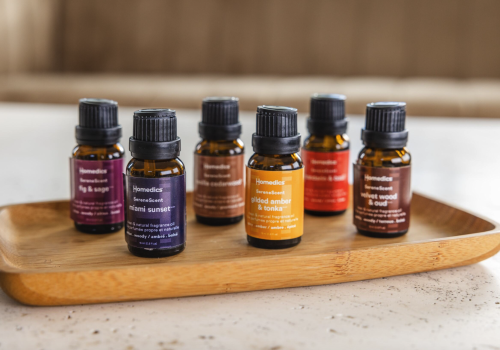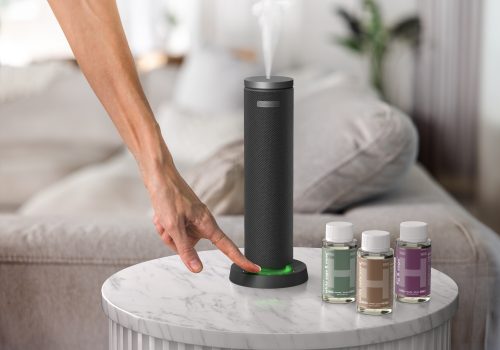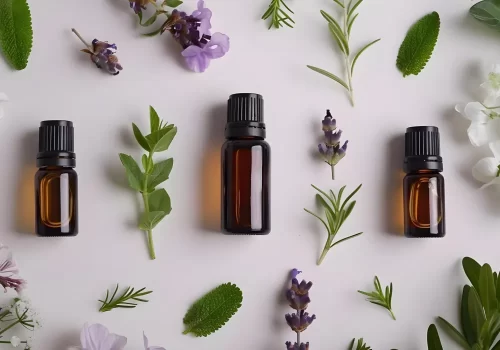How to Use a Humidifier & How Does it Work?
When you’re looking for a solution to the dry air inside of your home and the symptoms it causes, a humidifier is probably the best option.
Humidifiers are especially popular among homeowners during the winter months when their heaters seem to exacerbate the dry air problems. Beyond chapped lips, humidifiers may help reduce some of the potential effects of dry air, including sore throats, bloody noses, and more.
But how does a humidifier work and what exactly does it do?
HUMIDITY CONTROL BASICS: HOW TO USE A HUMIDIFIER AND HOW THEY WORK
The fundamentals of how a humidifier work are the following:
1. A humidifier holds water in a reservoir.
2. It uses a mechanism, such as a fan or vibrations, to turn that water into water vapor.
3. It emits that water vapor into the air, increasing the humidity.
Humidifiers differ in their methods of evaporation and dispersion, but all of them perform this basic function to increase the moisture in the air.
HOW DO YOU MEASURE HUMIDITY AND WHY IS IT IMPORTANT?
Scientists measure humidity as a percentage called relative humidity.
Air holds different amounts of water at different temperatures. Relative humidity describes the amount of water currently held in the air compared to the maximum amount of water the air could hold at that temperature.
Using relative humidity as a measurement of water vapor makes it easy to compare humidity levels in rooms at different temperatures.
Air Temperature Affects Humidity Levels
Air temperature has a major effect on humidity levels. Cold air holds much less water than warmer air. This is why humidifiers are so popular during the cold season.
Since cold air holds less moisture, the water in our bodies evaporates more quickly, resulting in chapped lips and dry skin. Low humidity can also cause higher levels of static electricity, increasing the chances that you’ll get a slight shock when you touch the doorknob.
When you crank up your home’s heaters to battle the cold outside, the heaters pull in outdoor air and warm it. But since that outdoor air is cold, it’s also very dry. When your heater blows it into your house as hot air, it’s still the same dry air. Further, because the air is now warmer and can hold more moisture, the relative humidity level becomes even lower.
It’s no surprise that dry air symptoms seem to become especially noticeable during the cold season.
House Construction Materials Affect Humidity Levels
The materials that make up your house—brick, concrete, wood, and more—may hold more or less moisture in the air. Good insulation can help control humidity and, at the same time, reduce your energy usage when the weather is cold.
What Is the Best Humidity Level I Should Set My Humidifier To?
Typically, the most comfortable relative humidity level falls between 30 and 50 percent.
If you’re depending on the humidity meter built into a humidifier, remember that it’s measuring the humidity right next to the source of the moisture. Therefore, it may display a relative humidity level that’s slightly higher than in the rest of the room.
TYPES OF HUMIDIFIERS
Different types of humidifiers use different mechanisms to humidify the air. The popular types of humidifiers fall into two broad categories:
- Cool mist humidifiers: A Cool mist humidifier uses fans, rotating discs, or vibrating plates to evaporate water without heat. They emit water vapor as a cool fog.
2. Warm mist humidifiers: A warm mist humidifier boils water to create steam, which floats into the air to raise indoor humidity levels. These devices don’t typically contain fans. Some people use essential oils or inhalant medicines designed for warm mist humidifiers.
Evaporative Humidifiers
Evaporative humidifiers are popular for their simple mechanisms and cool mist operation. A wicking filter draws water out of a reservoir attached to the machine. Then, a fan blows air through the filter, evaporating some of the water into the air.
Wicking filters are disposable; after the period recommended by the product, you should change the filter to ensure your machine is emitting clean air.
Impeller Humidifiers
An impeller humidifier uses rapidly rotating discs to throw water against a diffuser, which breaks the water into tiny droplets. The humidifier emits the water droplets into the air as a cool mist.
Ultrasonic Humidifiers
An ultrasonic humidifier uses vibrations to turn water into fine droplets. Inside the humidifier is a metal diaphragm that vibrates at an ultrasonic frequency to vaporize the water.
These humidifiers are popular because the vibrations are completely silent.
Steam Humidifiers
A steam humidifier, or vaporizer, is a warm mist device that boils water to create steam. It uses a heating element to heat the water to its boiling point. Then, the steam floats out of a hole at the top and humidifies the air—no fan required.
Whole-Home Humidifiers
In some homes, the HVAC system may have a humidifier built into it. This could be a valuable solution for particularly dry regions or especially sensitive people. However, installing a new whole-home humidifier system is expensive.
ADVANTAGES OF USING A HUMIDIFIER
A humidifier’s main functionality—adding moisture to the air—might seem pretty basic, but it can result in some significant benefits for the indoor air quality of your home.
Higher Humidity Makes the Air Feel Warmer
Sweating is how your body cools itself down, but sweating depends on air that’s dry enough to let sweat evaporate. With higher relative humidity, water evaporates more slowly from your skin, and the air feels slightly warmer. Due to this effect, using a humidifier may help reduce your heating usage during the colder seasons.
Reduced Dry Skin Symptoms
Dry air causes water to evaporate from your skin more quickly, so using a humidifier can help prevent dry skin symptoms. If you experience itchiness or dry, flaky skin, the increased humidity level may help relieve your symptoms.
Relieve Sore Throat and Cold Symptoms
Your throat can stay better moisturized when the relative humidity level is higher. Using a humidifier can help prevent scratchy throats and protect your vocal cords. More moisture in the air may also relieve some cough symptoms due to a cold.
Reduce Risk of Bloody Nose
Similar to its effects on your throat, dry air can have negative effects on your nose. As a humidifier adds moisture to the air, it may reduce the frequency or risk of nose bleeds and sinus irritation caused by dry air.
Contribute to Healthy Lungs
Research has suggested that dry air increases the risk of asthma and bronchitis. To help prevent these risks, you can use a humidifier to moisturize the dry air.
HUMIDIFIER CARE AND EFFICIENCY
Alongside all of the benefits of using a humidifier, there are a few aspects of their usage and care to keep in mind.Mold and Bacteria GrowthThe environment inside of a cool mist humidifier is humid and fairly warm—two qualities that might promote bacteria growth. Warm mist humidifiers, on the other hand, have little risk of bacteria growth because of the high temperatures inside of them.
Water sitting in the device’s reservoir for extended periods can also cause mold and mildew growth. And mineral buildup may be an additional problem for a humidifier that you haven’t cleaned regularly.
Most people probably fill their humidifiers with tap water, but tap water contains lots of minerals that eventually build up in the tank, on the fan blades, and on other internal parts. It’s vital that you regularly clean your humidifier and change the water using the tips below to ensure that it’s blowing clean water vapor into your home.
Energy Usage
If you’re trying to manage symptoms related to dry air in your home, you’ll probably have to run the humidifier at least once per day. There will be a minor energy cost that comes with running a humidifier for hours daily, but Energy Star labeled models should use relatively little electricity.
Refilling Frequency
The frequency at which you’ll have to refill your humidifier’s tank depends on the size of the tank and how often you run the humidifier. If you run your humidifier overnight or for most of the day, you’ll probably have to refill the device at least once per day.
Some humidifier models include an automatic setting that can maintain a set humidity level. They might adjust their speed or turn on and off based on internal sensors, saving energy when the tank is empty.
CLEANING & MAINTAINING A HUMIDIFIER
What should you use to clean a humidifier? Vinegar and bleach are two common, powerful cleaning agents that you can use to clean your humidifier. Bleach, especially, will kill any bacteria and mold that may have developed inside the machine.
You should clean your humidifier after you’ve kept it in storage for a few weeks or months. Then, you should clean it again after heavy usage for a month or more. Finally, give it a cleaning before you put it back into storage for a season.
For more specific recommendations and tips for your humidifier model, check its instruction manual.
MAKE YOUR INDOOR AIR COMFORTABLE WITH A HUMIDIFIER
If you’re experiencing dry skin or other symptoms due to the dry indoor air, using a humidifier is an important step you can take to make your home more comfortable.
Understanding how to use a humidifier properly can enhance indoor air quality, especially during dry seasons.
Don’t wait for the cold air to cause chapped lips and a scratchy throat. Find a great humidifier with the right size and set of features for your home.
Medical Disclaimer: This content is provided for informational purposes only and not intended to be a substitute for professional medical advice, diagnosis or treatment.
SOURCES
What Is Relative Humidity and How Does It Affect How I Feel Outside?, How Stuff Works: https://science.howstuffworks.com/nature/climate-weather/atmospheric/question651.htm
How Dry Winter Air Can Cause Respiratory Problems—From Bronchitis to Nosebleeds, Cleveland Clinic: https://health.clevelandclinic.org/can-best-combat-effects-dry-winter-air/
Nosebleeds, Teens Health: https://kidshealth.org/en/teens/nosebleeds.html
Nosebleed (Epistaxis), Cleveland Clinic: https://my.clevelandclinic.org/health/diseases/13464-nosebleed-epistaxis
Patient Education: Cough or Cold, What to Take, University of Florida Student Health Care Center: https://shcc.ufl.edu/services/primary-care/self-help-resources/health-care-info-online/patient-education-cough-or-cold-what-to-take/
Humidifiers: Ease Skin, Breathing Symptoms, Mayo Clinic: https://www.mayoclinic.org/diseases-conditions/common-cold/in-depth/humidifiers/art-20048021





